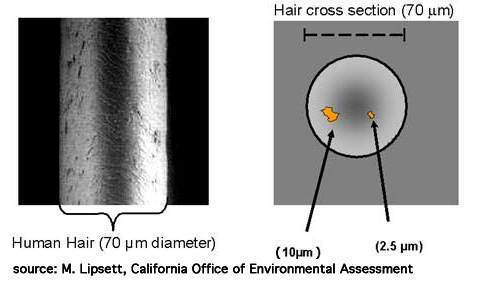November 16, 2015 – by Daphne Chen in the Deseret News. Editor’s note: For those who follow such mundane things as air pollution data, it is clear that the many days in Evansville and surrounding environs, reach levels referred to in this new study. Unfortunately, government officials at every level, local, state and national dismiss poor air quality in the region as just cost of doing business. 
If you have heart disease, yellow may not be your friend.
Patients with heart disease have an increased risk of having a serious heart attack even during moderate air quality days, according to findings released last week by Intermountain Heart Institute.
Kent Meredith, a cardiologist with Intermountain Medical Center in Murray and one of the researchers on the study, said the risk begins when the level of fine particulate matter — what scientists call PM2.5 — reaches 25 micrograms per cubic meter of air.
That falls in the range of a yellow air quality day — what the Utah Department of Environmental Quality labels “moderate” air quality.
“Patients who have known heart disease are going to be more vulnerable on those days when you see the air pollution spike,” Meredith said. “Those are days when they probably ought to adjust their activities.”
The study involved analyzing two decades of data from more than 16,000 Intermountain Healthcare heart patients along the Wasatch Front, cross-referencing it with 20 years of local air quality data.
“It’s a very complete, very big study in terms of the number of patients, which allows us to look for even small effects,” Meredith said.
Researchers found that for every 10 micrograms per cubic meter increase in PM2.5 levels, a patient’s risk for serious heart attack rose by 15 percent.
The study suggests that people with coronary artery disease should limit their outdoor exposure on many yellow days and all orange and red days.
That was news to Philip Swensen, 72, who lives in Hyde Park in Cache County and had a sudden and severe heart attack last December.
He suffered a severe heart attack during a squash game when an artery became “100 percent blocked.”
“Given my experience of just this past year healthwise, I will probably start to listen to that a little more carefully,” said Swenson, who also contracted pneumonia last year.
“Logan is noted for just really getting nasty sometimes,” he added. “That takes a toll on your body.”
The findings weren’t surprising to Nathan LaCross, an epidemiologist with the Utah Department of Health, who said air pollution research, although still relatively new, all pretty much says the same thing.
“This study sort of emphasizes our current knowledge and our current message,” LaCross said. “We knew that heart attacks and heart disease were associated with particulate pollution.”
Researchers already know air pollution may trigger heart attacks and strokes, particularly in patients who are already at risk. Researchers think the particulate matter causes an inflammatory immune reaction in the arteries that causes plaque to rupture and create blood clots.
But researchers didn’t know what type of heart attacks were most likely to be triggered, Meredith said. That’s what the study discovered: Air pollution exposure is associated with the most severe type of heart attack, known as STEMI, for ST segment elevation myocardial infarction.
The data is muddier for other types of heart attacks — non-STEMI and unstable angina — both of which are less severe, Meredith said.
Not to overstate the case, Meredith emphasized that the findings only apply to people who have acute coronary disease.
But he said those patients would do well to check the air quality index as winter approaches.
Last winter, the air quality sensor at Hawthorne Elementary School in Salt Lake City recorded 11 days when the PM2.5 level exceeded 25. The year before that, 34 days saw PM2.5 levels higher than 25, most in January and December.
LaCross also emphasized that personal health — avoiding smoking, excessive drinking and continuing to exercise, even on bad air quality days — is important.
For Swensen, who has an independent streak, that won’t be a problem. He said he’s not giving up squash, which he has played two or three times a week since the ’70s.
Air quality won’t “dictate what I do in those days, (but) it’ll be a factor,” he said. “At the moment, I’m not back to my midseason form.”
Email: dchen@deseretnews.com, Twitter: DaphneChen_
